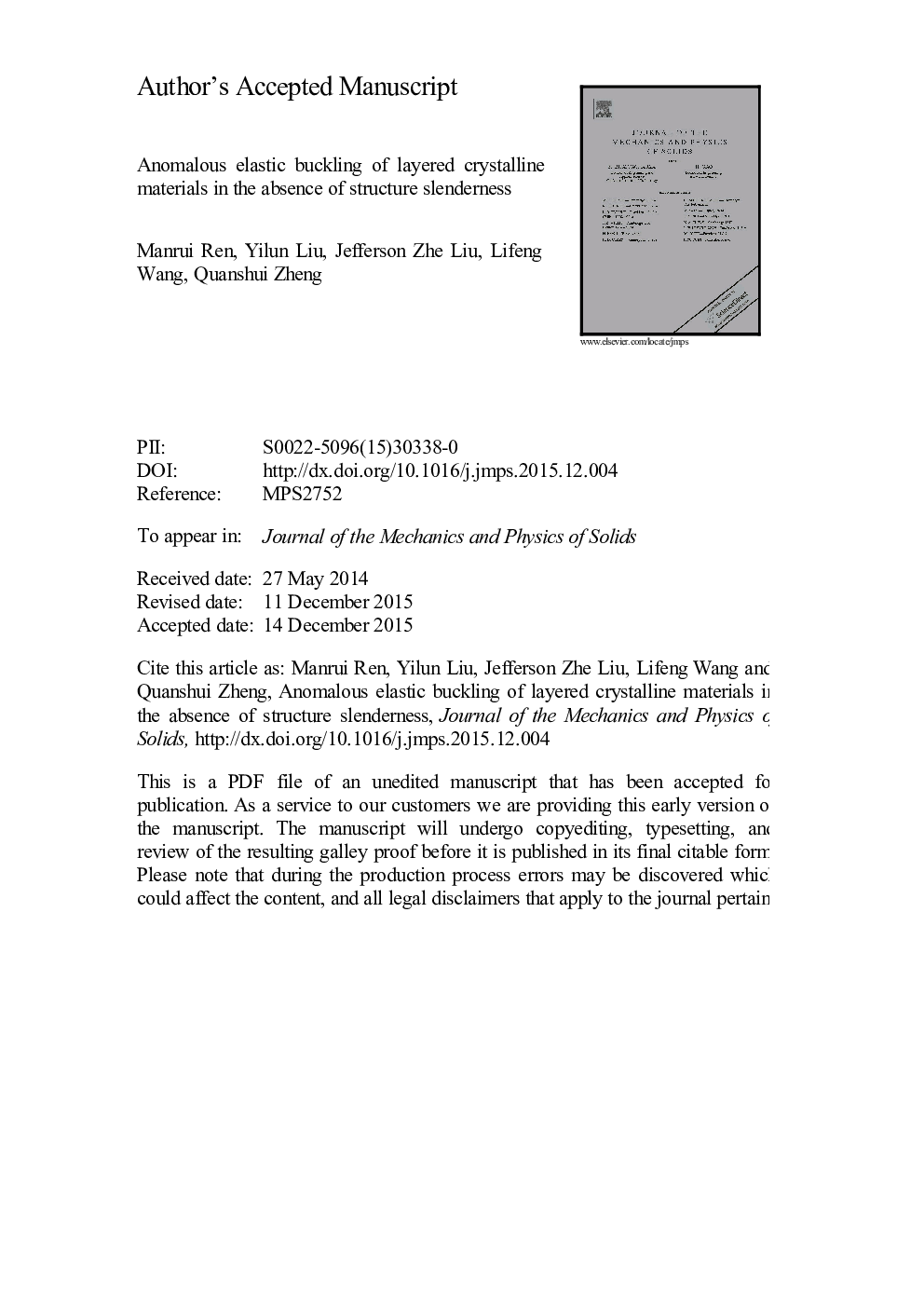| Article ID | Journal | Published Year | Pages | File Type |
|---|---|---|---|---|
| 7177831 | Journal of the Mechanics and Physics of Solids | 2016 | 32 Pages |
Abstract
Layered crystalline materials, such as graphene, boron nitride, tungsten sulfate, phosphorene, etc., have attracted enormous attentions, due to their unique crystal structures and superior mechanical, thermal, and physical properties. Making use of mechanical buckling is a promising route to control their structural morphology and thus tune their physical properties, giving rise to many novel applications. In this paper, we employ molecular dynamics (MD) simulations and theoretical modeling to study the compressive buckling of a column made of layered crystalline materials with the crystal layers parallel to the compressive direction. We find that the mechanical buckling of the layered crystalline materials exhibits two anomalous and counter-intuitive features as approaching the zero slenderness ratio. First, the critical buckling strain εcr has a finite value that is much lower than the material's elastic limit strain. A continuum mechanics model (by homogenizing the layered materials) is proposed for the εcr, which agrees well with the results of MD simulations. We find that the εcr solely depends on elastic constants without any structural dimension, which appears to be an intrinsic material property and thus is defined as intrinsic buckling strain (IBS), εcrIBS, in this paper. Second, below a certain nanoscale length, l0, in the compressive direction (e.g., about 20 nm for graphite), the critical buckling strain εcr shows a size effect, i.e., increasing as the column length L decreases. To account for the size effect, inspired by our recently developed multi-beam shear model (Liu et al., 2011), a bending energy term of individual crystal layer is introduced in our continuum model. The theoretical model of εcr agrees well with the size effects observed in MD simulations. This study could lay a ground for engineering layered crystalline materials in various nano-materials and nano-devices via mechanical buckling.
Keywords
Related Topics
Physical Sciences and Engineering
Engineering
Mechanical Engineering
Authors
Manrui Ren, Yilun Liu, Jefferson Zhe Liu, Lifeng Wang, Quanshui Zheng,
